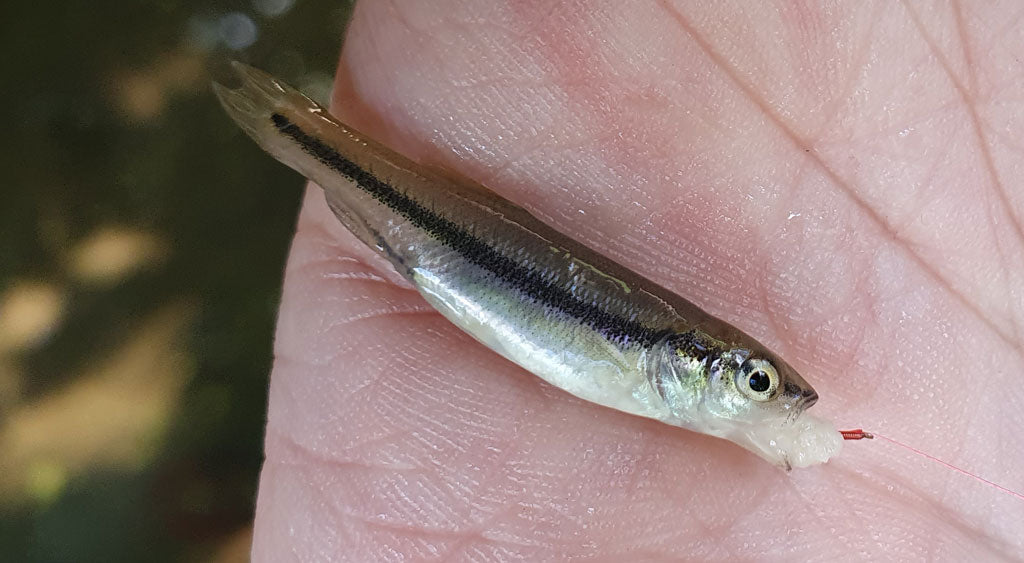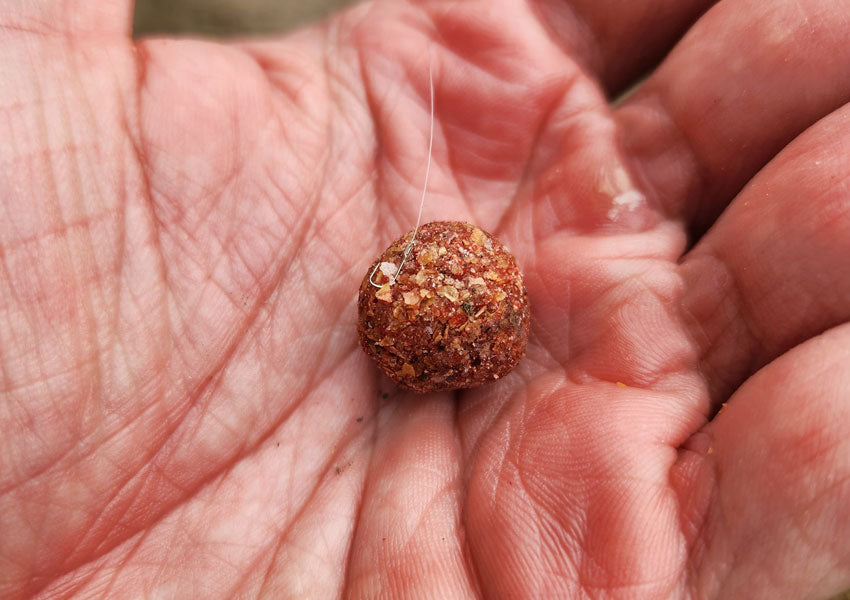
The best micro fishing baits
Micro fishing is the pursuit of tiny fish with a line and hook. Definitions on what counts as a "micro fish" vary from one source to the next.Generally speaking we think micros are fish that are too small to catch on traditional fishing tackle.
Dedicated micro anglers in Japan sometimes try to catch a fish that is smaller than a coin. In other places anglers may try to catch as many different micro fish as possible. There's a whole world of micro fishing emerging!
Every species of fish has its own feeding preferences. That is true of micros too. Some eat insects while others feed on algae or biofilm. Many micro fish feed on whatever is available.
The truth is that most small fish can be caught on a wide variety of things. We've caught micros on everything from natural baits to bare hooks. You can also catch many micro fish on tiny flies like a size 22 Disco Midge Larvae, but here we are focused on bait.
When it comes to bait there are some options that are more effective than others. Micro fishing baits can be broken down into three categories: natural baits, prepared baits, and incidental baits.
Natural micro fishing baits
Natural micro fishing baits are the sort of baits that micro fish encounter in natural on a regular basis. This includes things like worms, insects, molluscs, crustaceans and even plants!
Where regulations allow, it is possible to catch a lot of micro fishing on naturally collected insects like mayfly nymphs, ants or aquatic worms. Small pieces of plant or the soft parts of snails can work too where allowed.
Of course collecting and fishing with those naturally occurring baits can be difficult and unpredictable. You may not be able to find any insects on a given day. Or you may be in an area where collecting rock worms is prohibited.

That is one reason many micro anglers prefer to use natural baits that are readily available for purchase. They include things like red worms, maggots, and wax worms.
You can pick up live worms at many local tackle shops and even some pet stores. We sell preserved wax worms and meal worms that can be kept ready for whenever you want to go fishing. You can sometimes find blood worms at pet stores.
Obviously, most natural baits are too large to use on an actual micro fishing hook. But you can easily break off a tiny piece of any of these baits using a finger nail or a sharp pair of clippers.
Getting the bait onto the micro hook can be the difficult part, but it certainly can be done. It just requires some patience, practice, and a steady hand. Some prefer prepared microfishing baits because they are easier to use.
Prepared micro fishing baits
Prepared micro fishing baits are made specifically for catching micro fish. They come in a powder or paste form. Most are made and sold in Japan where micro fishing for bitterling is somewhat popular. Other areas may have their own locally available baits too.
Paste form micro fishing baits are sold ready to fish. The bait is squeezed out of a tube and through a tiny opening. Just enough is squeezed out to cover a micro hook. Then the hook is pulled through the bait. Paste micro fishing bait is difficult to find outside of Japan. At times it can even be difficult to find inside of Japan.
Powder baits are more common. To use these baits you combine the powder with water and roll the doughy mix into a small ball. Then you drag your micro fishing hook over the ball with the point facing down. The hook should pick up enough of the bait to fish.

Marukyu Gluten is probably the most popular powder micro fishing bait in Japan. We carry Marukyu Gluten whenever we can, though supplies are usually very limited and difficult to acquire.
That's why we started selling our own prepared micro fishing bait. We find that this bait is just as effective as gluten from Japan. It is ready to use right out of the jar.
We also carry a micro fishing bait mix. To use, just mix the powder with water at a 1:1 ratio. Combining a tablespoon of the powder with a tablespoon of water will give you more than enough micro bait for most fishing.
You don't have to be very precise about it either. We usually just "eye ball" the mix until we come up with the consistency we're looking for. Use less water for a thicker mix. Use more water for a more diluted bait.
Incidental baits
There are also what we call "incidental baits" for micro fishing. These are things that aren't meant to be baits at all. Yet they still work for catching micros.
Some incidental micro fishing baits include bread dough, cheese, rice and tropical fish food. These things tend to be easy to grab from home or a store and turn into bait.

We find that fresh bread is one of the best incidental baits of all for micro fishing. It is easy to find and easy to use. We've caught micro fish all over the world with nothing more than a slice!
Using fresh white bread is pretty simple. Basically you want to mold a tiny piece of the white part of the bread around your micro hook. You can pull of a piece than pinch it down to size with a fingernail or clippers. Or you can roll the white part of the bread into a ball and use it as you would the prepared bait mentioned above.
Another option is to get the break wet. This makes it sticky and almost like bread dough. Some anglers prefer this technique. We usually just stick to dry bread. Though stale and brittle bread can be impossible to use. So keep your bread wrapped up until you're ready to use it!
Micro fishing bait tools
Baiting a minuscule micro fishing hook can take some getting used to. It's not necessarily as easy as running a large live bait hook through the middle of a night crawler.
Some tools have been created to make the task easier. Again these are more widely available in Japan than anywhere else if only because micro fishing is so much more popular there.
We carry a microfishing bait tool from the Japanese manufacturer Marufuji that works a lot like a syringe.
To use this tool you must first pull out the plunger section. Next, insert a ball of prepared micro bait, bread dough or a ball of wet white bread. Then reinsert the plunger.
Now you can push the plunger forward to force just a little bait out of the tiny nozzle tip. Then just pull your micro hook through the small exposed piece of bait and you are ready to go.
We also offer a metal micro fishing baiting tool. It is simple to use. First unscrew the lid. Then insert bait. Next, put the lid back on. Now when you twist the cap, a small amount of bait will come out of the hole on the side.
Another option is to use small plastic bag. Place your microfishing bait into the bag and force it all into one corner. Then make a small pinhole at the corner of the bag. Now you can squeeze the bag and force bait out through the hole. It works just like the microfishing bait tool!
Finally there are micro bait rings that can be worn on the finger. These are popular in Asia. Homemade versions are constructed of soda pop bottle lids glued to rings. There are also per-manufactured micro bait rings available. The rings keep your fingers clean while keeping bait right at arms length. Just run your hook through the bait and you're ready to fish!
With a little practice, baiting micro fishing hooks becomes second nature. Using the best micro fishing baits makes catching micro fish easier. Hopefully this article has helped you choose and use micro fishing baits.
